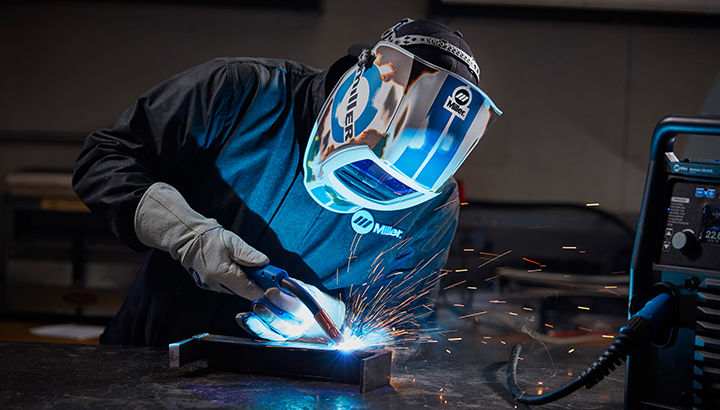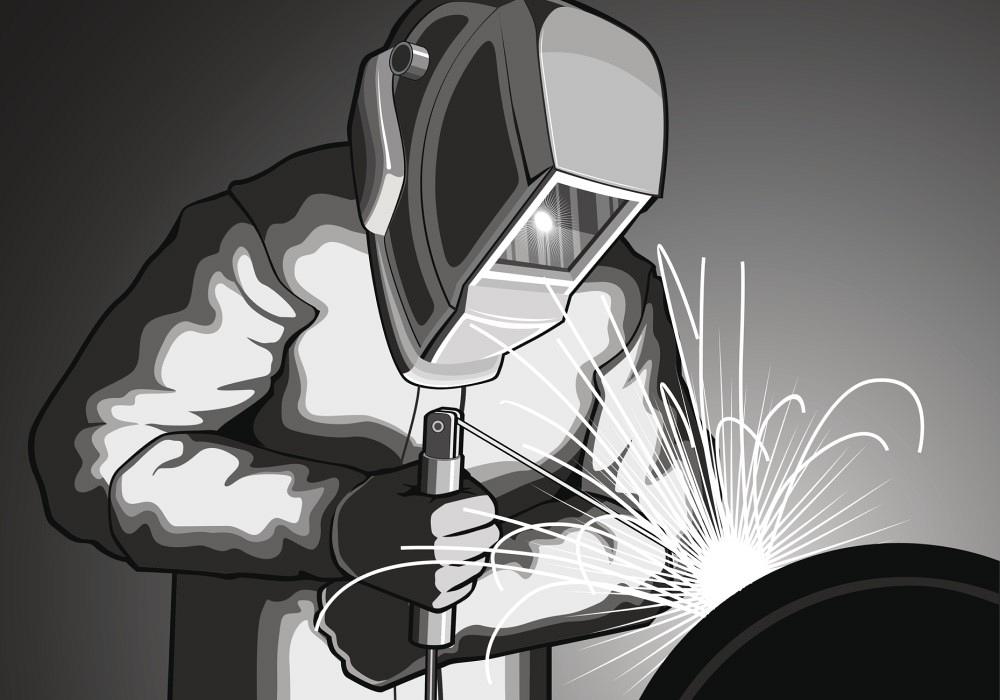Typical Welding Repair Work Issues and How to Address Them Properly
Welding repair services frequently run into a series of concerns that can endanger the honesty of the last product. Usual issues include inadequate infiltration, porosity, and misalignment, amongst others. Each problem presents unique obstacles that need certain approaches for resolution. Recognizing these issues is essential for welders intending to improve their abilities and end results. This conversation will discover these common welding fixing concerns and reliable methods to resolve them.
Poor Infiltration
Insufficient infiltration takes place when the weld metal falls short to totally fuse with the base product, leading to weak joints and possible architectural failings. This issue usually stems from insufficient heat input, wrong electrode angle, or improper welding rate. Welders may run into inadequate infiltration due to a miscalculation of the required criteria for a specific material density or type. Additionally, contamination on the base product's surface can prevent effective bonding, aggravating the trouble. To attend to inadequate penetration, welders ought to ensure proper settings on their devices and preserve a clean work surface. Regular assessment of welds is advised to determine any kind of shortages early, enabling prompt improvements and the prevention of jeopardized architectural stability in welded assemblies.
Porosity
Porosity is a common defect in bonded joints that materializes as small gas bubbles entraped within the weld steel. This flaw can compromise the stability of the weld, bring about decreased strength and prospective failing under tension. Montana Mobile Welding and Repair Belgrade. Porosity commonly emerges from contamination, moisture, or inappropriate welding methods, which enable gases to leave right into the molten weld swimming pool. To address porosity, welders should guarantee proper surface prep work, preserve a clean workplace, and make use of appropriate welding criteria. In addition, selecting the right filler material and shielding gas can mitigate gas entrapment. Regular examination and testing of welds can aid recognize porosity early, assuring timely rehabilitative actions are taken, consequently protecting the top quality and dependability of the welded structure
Imbalance
Misalignment in welding can develop from different aspects, including improper configuration and thermal development. Understanding the source is essential for efficient resolution. Numerous correction methods are readily available to straighten parts and ensure architectural stability.
Sources of Misalignment
Welding misalignment typically stems from a variety of underlying concerns that can endanger structural integrity. One main reason is incorrect fit-up of parts before welding, which can bring about spaces and irregular surface areas. Variations in thermal development during the welding procedure can also cause distortion, specifically if the materials being joined have various coefficients of development. Furthermore, insufficient fixturing and clamping may stop working to hold elements firmly in position, resulting in motion throughout welding. Inadequately conserved tools, consisting of welding machines and tools, may present disparities in the weld grain, more adding to imbalance. Operator mistake, stemming from inadequate training or experience, can likewise play a significant role in producing misaligned welds.

Adjustment Strategies Available
Attending to misalignment successfully requires a combination of restorative strategies tailored to the particular problems available. One common approach is the use of jigs or components to hold elements in the appropriate placement throughout welding, making sure regular positioning. Additionally, pre-heating the materials can aid decrease distortion and boost fit-up. For significant misalignment, mechanical adjustment techniques, such as utilizing hydraulic jacks or clamps, can be employed to correct the setting prior to welding. Post-weld heat therapy might also be necessary to eliminate tensions created by imbalance. Cautious evaluation and adjustment during the arrangement phase can stop misalignment problems from ending up being significant problems, advertising a smoother welding process and boosting overall architectural honesty.
Distortion
Distortion is an usual obstacle in welding that can emerge from various aspects, including unequal home heating and air conditioning. Comprehending the reasons of distortion is essential for applying efficient prevention techniques. Resolving this issue not just enhances structural stability however also enhances the overall high quality of the weld.
Sources of Distortion
When based on the intense warmth of welding, products often undergo changes that can cause distortion. This phenomenon mostly develops from thermal development and tightening throughout the welding process. As the weld location heats up, the product increases; upon air conditioning, it acquires, which can develop inner tensions. Additionally, uneven heating throughout a workpiece can intensify these tensions, leading to bending or bending. The kind of product also plays a substantial function; metals with varying thermal conductivity and coefficients of growth might respond in a different way, bring about uncertain distortions. Poor joint style and inadequate fixturing can contribute to imbalance throughout welding, enhancing the likelihood of distortion. Understanding these causes is necessary for efficient welding repair work and prevention techniques.
Prevention Techniques
Effective avoidance techniques for distortion throughout welding concentrate on managing warmth input and ensuring appropriate joint design. Maintaining a consistent warm input helps to lessen thermal expansion and tightening, which can cause distortion. Using strategies such as preheating the workpiece can also decrease the temperature slope, advertising uniform heating. Additionally, choosing ideal joint styles, such as T-joints or lap joints, can improve security and reduce stress focus. Executing appropriate fixturing to protect the work surfaces in position even more help in preserving placement throughout the welding process. Staggered welding series can distribute warmth extra evenly, protecting against localized distortion. By using these strategies, welders can significantly lower the probability of distortion and improve the general quality of their welds.
Breaking
Splitting is an usual concern run into in welding repair work, usually arising from numerous variables such as incorrect air conditioning prices, product selection, or poor joint prep work. The occurrence of splits can significantly jeopardize the honesty of the weld, leading to potential failures throughout operation. To resolve this issue, welders have to initially evaluate the origin, making sure that materials are suitable and suitably picked for the certain application. In addition, controlling the air conditioning price during the welding procedure is vital; rapid air conditioning can induce stress and anxiety and result in cracking. Proper joint layout and preparation additionally add to minimizing the danger. Executing these methods can boost weld top quality and longevity, ultimately reducing the chance of splitting in ended up weldments.

Insufficient Combination
A substantial concern in welding fixings is insufficient combination, which takes place when the weld steel does not effectively bond with the base material or previous weld passes read the article - Montana Mobile Welding and Repair. This try this out issue can lead to weaknesses in the joint, possibly compromising the stability of the bonded framework. Elements adding to incomplete fusion include insufficient warmth input, incorrect welding strategy, and contamination of the surface areas being signed up with. To resolve this issue effectively, welders should assure appropriate pre-weld cleansing and surface prep work, in addition to change their welding specifications to accomplish sufficient penetration and combination. Regular examination during the welding process can also help identify insufficient blend early, enabling timely rehabilitative measures to enhance the total quality of the weld
Overheating
While welding repairs can improve architectural honesty, overheating presents a significant challenge that can bring about product destruction. Extreme heat during welding can change the mechanical buildings of metals, resulting in decreased stamina, boosted brittleness, and bending. This phenomenon is particularly critical in high-stress applications where structural dependability is vital. Recognizing getting too hot can include aesthetic evaluations for discoloration or distortion, along with checking temperature throughout the welding process. To mitigate the risks connected with overheating, welders should utilize ideal strategies, such as managing heat input, readjusting travel speed, and utilizing appropriate filler materials. Additionally, executing pre- and post-weld heat therapies can assist recover material buildings and improve the total high quality of the repair, guaranteeing long-lasting performance and security.
Frequently Asked Concerns
What Are the Usual Indicators of a Welding Flaw?

How Can I Examine My Welds for Top quality?
To examine welds for high quality, one can utilize visual examinations, ultrasonic testing, and radiographic approaches. Each method assures structural honesty, identifies flaws, and validates adherence to specified standards, eventually boosting the integrity of the bonded joints.
What Security Safety Measures Should I Take While Welding?
When welding, one ought to focus on security by using suitable individual protective devices, ensuring correct air flow, safeguarding combustible products away, keeping a tidy office, and being mindful of surroundings to avoid injuries and accidents.
Can I Repair a Weld Without Remodeling the Entire Joint?
Fixing a weld without redesigning the whole joint is feasible, depending upon the damages (Belgrade Welding). Methods such as grinding, including filler product, or using a welding process can effectively deal with specific defects while preserving the bordering framework
What Tools Are Crucial for Reliable Welding Fixes?
Important tools for effective welding repair services consist of a welding machine, cord brush, mill, protective gear, clamps, and filler materials. Each device plays an important duty in making certain quality and safety and security during the repair procedure. Porosity commonly arises from contamination, wetness, or improper welding techniques, which allow gases to get away into the liquified weld swimming pool. Improperly maintained devices, including welding machines and tools, may present inconsistencies in the weld grain, additional adding to imbalance. When subjected to the intense warm of welding, materials usually undergo modifications that can lead to distortion. Breaking is an usual problem run into in welding repairs, usually resulting from numerous elements such as incorrect air conditioning rates, product choice, or inadequate joint prep work. A substantial concern in welding repair services is incomplete blend, which happens when the weld metal does not properly bond with the base product or previous weld passes.